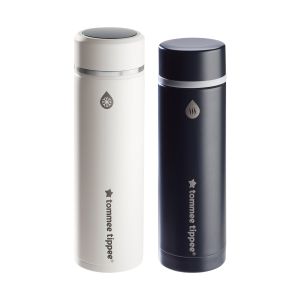
This is a demo store. No orders will be fulfilled.
Subscription orders can be cancelled at anytime. Free delivery on all subsequent subscription orders. Find out more about subscriptions.
They’re easy and fuss free
Your products are automatically sent to you
You save up to 10% when you sign up for a subscription
You can cancel at any time
Parents can express breast milk in a variety of ways ��� by hand, with a manual breast pump, or using an electric breast pump.
No matter which type of pump you choose, they all work in pretty much the same way. They express milk from your breast by mimicking the action of your little one suckling around your nipple and areola.
Electric breast pumps express breast milk in a cycle of around 50 to 90 sucks per minute, just like a baby! If you opt for a manual hand-held pump, you���re in control and the pace of expression will be down to you. As your breast milk is expressed, it's collected and can be transferred to a sterile bottle, pouch, or bag to be stored for use later.
It can be tricky to know how and when to start expressing milk, so let���s run through some advice and top tips for pumping success.
During pregnancy, you can hand express milk known as colostrum and store it in the freezer in oral syringes to give to your baby once they arrive.
You should never use a breast pump during pregnancy, and always discuss hand expression during pregnancy with your midwife or health care provider first. They can help you decide if it's right for you and your baby, and help you get started safely.
Most health professionals recommend that you focus on establishing your breastfeeding routine first. You should make sure that you and your baby are comfortable with breastfeeding before you introduce a breast pump.
However, some parents are advised by their midwife or lactation consultant to express in the first few weeks after birth due to breastfeeding difficulties.
If you���re very uncomfortable with a full feeling in your breasts during the first few weeks after your baby is born, you may want to relieve engorgement with an occasional expressing session. This should only be a short session though, simply serving to give you relief.
You can choose to express breast milk with a breast pump or by hand.
Whichever method you choose, there are a few things you can do to help make it easier:
If you���re using a breast pump for expressing, there are a few extra steps you���ll need to consider before starting:
Expressing by hand means that you can encourage milk to flow from a particular part of your breast. This can help if one of your milk ducts is blocked.
To express breast milk by hand:
When you���re expressing breast milk, start by making sure your breast is fully in the horn of the breast pump. You need to create a seal to get things working efficiently.
If you're using an electric pump, begin slowly at first while ensuring that the pump is in the correct position and feels comfortable. You should be able to see the breast milk flowing into the attached bottle. If you can't, it's worth trying to adjust the pump to get a better seal on your breast.
While you���re expressing, use one hand to massage your breast from the armpits towards the nipple.
Be sure to express until the milk flow stops on each breast. How long this will take can vary for every mum, and even from one day to the next. Don���t worry if you only get a little milk though, everyone is different, and it will get easier.
If you're having problems expressing breast milk, you might like to try something called breast compressions while you're expressing. It will help to stimulate additional let-downs and thoroughly drain your milk ducts.
After expressing milk from one breast, repeat the cycle on the other.
Remember, every time you express, you're tricking your body into thinking that your baby has taken a feed! Even if you express and no milk comes out at all, you're placing the order for milk to be made later.
If your baby was born prematurely, they'll often still be able to take small feeds of breast milk. These first tastes should be given through a syringe and help coat their mouth with the immune-protecting components of breast milk.
If you need support with expressing milk for your premature baby, speak to your midwife or a healthcare professional.
Every breastfeeding journey is different, and the choice to continue or stop expressing breast milk at any stage is entirely up to you!
If you decide to stop, you might have mixed emotions during the process of weaning away from breastfeeding or using a breast pump. The truth is, there���s no right or wrong time or technique, just whenever feels best for you.
The amount of time that transitioning away from using a breast pump takes varies, but the process should be gradual to give you and your little one time to adjust. It���s a good idea to:
If you���re unsure, it���s a good idea to speak to your doctor or alactation consultantfor advice.